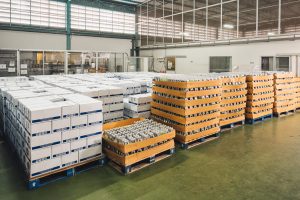Back in 2008, Frank Yiannas, Vice President of Food Safety for Walmart and former Vice Chair of GFSI published a book titled “Food Safety Culture, Creating a Behavior-Based Food Safety Management System.” In this publication, the food safety expert posits that food risks must be controlled by relying on food science principles but also by changing the way the food industry operates. He suggests that dramatic improvements in reducing the global burden of food-borne disease will be achieved once operational practices change. His book explores strategies linked to organizational culture and human behaviour.
With the implementation of the Food Safety Modernization Act and the impending release of the Safe Food for Canadians Act and Regulations, food safety awareness in North America is at an-all-time high. The need to reduce risks and comply with food safety laws and regulations is fueling a renewed interest in the concept of food safety culture.
SAI Global held an informational webinar on the subject this month. This post summarizes the ideas and tips that were presented during the talk. A poll to determine how food companies currently measure the food safety culture of their businesses reveals that 58% of respondents consider that food safety culture is a measure of reviewing documentation, keeping employee morale high, receiving feedback from senior management and reviewing food safety audit results. Of all these activities, food safety audits, 30% of respondents reported, give the best insights into a company’s food safety culture. In a 2016 SQF Professional update, SQFI reported that the average audit scores for unannounced audits was very close to that of announced audits (93.1% and 93.5% respectively). Could the adoption of global food safety practices (certification to a GFSI-benchmarked scheme) be an indication of food safety culture?
Defining Food Safety Culture
Food Safety Culture can be demonstrated by these 5 best practices:
- Achieving operational excellence
- Providing leadership and mentoring
- Demonstrating employee engagement
- Developing a food safety culture which permeates all aspects of plant operations (Sales, Operations, Procurement)
- Ensuring that management is committed to providing resources and support
More specifically, you are demonstrating adherence to a food safety culture when
- You explain the need for food safety controls to be implemented, monitored and verified;
- You enforce food safety principles consistently by providing support to employees;
- You welcome the challenge of participating in unannounced audits;
- You demonstrate continuous improvements by setting and meeting Key Performance Indicators;
- You go beyond meeting minimum requirements to be compliant;
- You are pro-active; you willingly investigate food safety incidents to find non-conformities;
- You conduct proper root cause analyses and project post-mortems to learn from past issues.
What are the benefits of a Food Safety Culture?
A business that embraces risk management solutions is proactive and is therefore determined to reduce food safety incidents. Risk mitigation is designed to avoid regulatory actions and recalls. It allows businesses to maintain their food safety certifications. It also minimizes customer complaints and the amount of reworked product. A strong management commitment and involvement is key in enabling the organization to focus on strategic objectives for growth and innovation which, in turn, leads to sustainability and competitiveness. Social responsibility translates to higher employee morale and loyal customers.
Not sure if you are quite there yet? The following elements impede the development of a food safety culture:
- Lack of leadership
- Strategic objectives are focused primarily on achieving revenue/reducing cost, not on quality and food safety
- Written policies don’t support the culture or are not implemented
- The facility is not audit-ready at all times
- Employees feel pressured to meet food safety requirements (lack of support, rules are not explained)
- High employee turnover
Checklist to evaluate behaviour-driven criteria in your organization
Do you have senior management’s support when issues are brought forward?
Is management involved in the day-to-day operation (weekly food safety meetings, daily plant tours)?
Is the senior management team trained on food safety principles and food safety management? Have people receive formal HACCP training?
Does senior management support internal audits?
Is there a fear of unannounced audits in your facility?
Is your team using Corrective/Preventive Action tools to prevent re-occurrence of deficiencies?
Do managers and supervisors consider food safety when deciding to rework or release product?
Do your employees consume your food product? Do they have confidence in the brand?
Contact Sirocco Food & Wine Consulting to implement Food Safety into your organization. We offer SQF Audits, GMP Audits and HACCP training.
References
SQFI – Professional update 2016 (April 6, 2016)
SAI Global webinar – Tips on building and measuring food safety culture (January 26, 2017)





